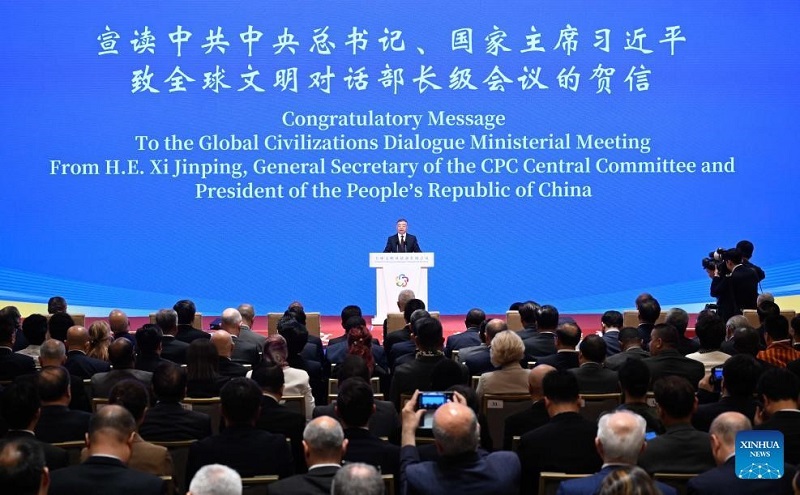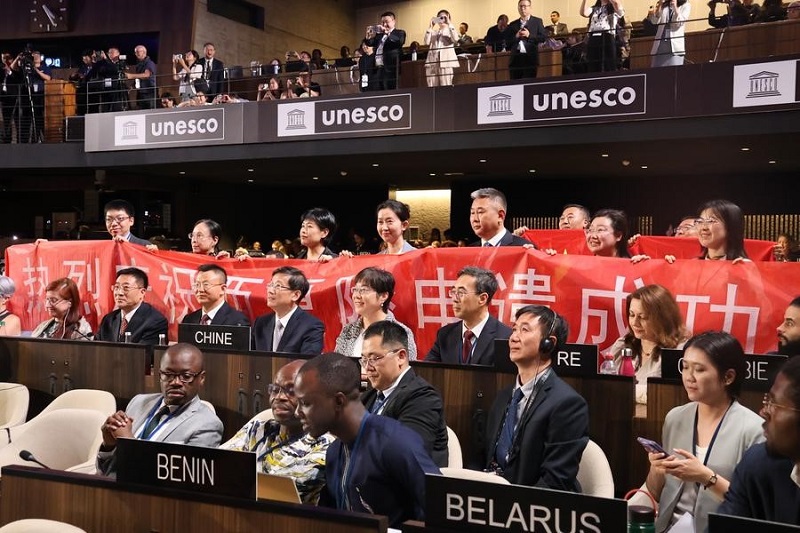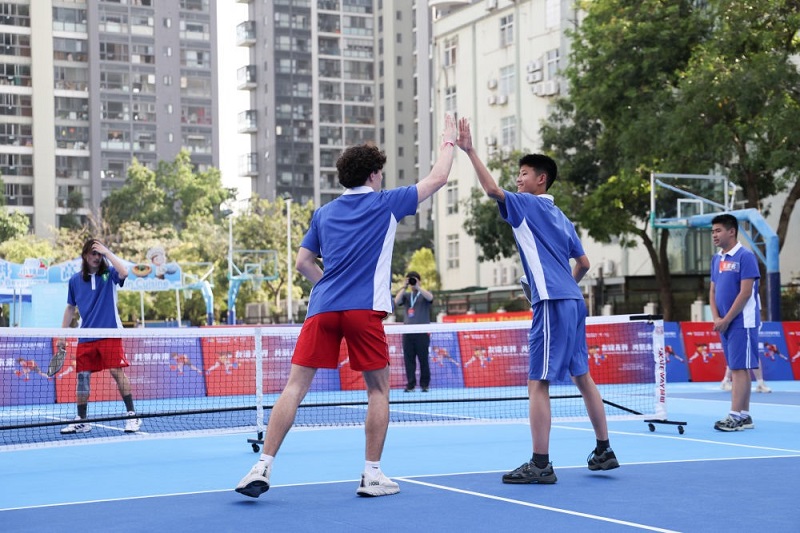The Global Civilization Initiative bridges ancient wisdom and modern challenges with dialogue platforms, through which diversity ignites shared futures.
At a time when humanity grapples with intersecting deficits in peace, development, security and governance, civilizations stand at a crossroads. As traditional Western-led solutions falter, China’s Global Civilization Initiative (GCI) emerges as a transformative framework, translating historical wisdom into actionable strategies. Recent forums like the 11th Nishan Forum on World Civilizations and the Global Civilizations Dialogue Ministerial Meeting underscore growing consensus on core principles: equality, mutual learning, inclusive dialogue, and collaborative response to global challenges. As Chinese President Xi Jinping pointed out in his congratulatory letter to the Global Civilizations Dialogue Ministerial Meeting, “History shows that exchanges and mutual learning among civilizations are essential for civilizations to flourish and for human progress to be made.”

The GCI’s four pillars, respecting civilizational diversity, upholding shared human values, preserving heritage through innovation, and expanding people-to-people exchanges, resonate globally. UNESCO’s former Director-General Irina Bokova aptly calls the initiative a “gift to the world,” emphasizing its potential to transform cultural diversity from a source of division into a foundation for peace and cooperation.
This potential is validated by data. A recent global public opinion blue paper on civilizational outlook, released during the Global Civilizations Dialogue Ministerial Meeting, revealed strong international endorsement of the GCI. Specifically, 90.8 percent of respondents agreed that respecting diversity should be a fundamental principle for the international community, while 91.8 percent supported the view that relations between different cultures should prioritize cooperation over confrontation. Core concepts such as cultural diversity, equal dialogue, and win-win cooperation have become universally recognized norms globally.
Tangible collaborations exemplify this ethos. At Cambodia’s Angkor Wat, Chinese and Cambodian experts fused 3D scanning with traditional Khmer craftsmanship to resurrect the Ta Keo Temple. Kim Sothin, deputy director of Cambodia’s Apsara Authority for the Protection and Development of Angkor, noted at the Nishan Forum that what they restored are not just stones, but the DNA of civilizational dialogue.
U.S.-China collaboration has helped repatriate around 600 artifacts to China, including Warring States-era (475-221 B.C.) silk manuscripts (Wuxing Ling and Gongshou Zhan). These returns are vivid examples of friendship and international collaboration to reclaim and protect humanity’s shared legacy. Chinese Ambassador to the United States Xie Feng observed that each relic carries the nation’s soul and their return touches every Chinese heart.

China’s 40-year partnership with UNESCO saw a new outcome in July 11, 2025, with the designation of the Xixia Imperial Tombs, a group of imperial burial sites from the Xixia Dynasty (Western Xia,1038-1227), as the country’s 60th World Heritage Site. China-German restoration of Shaanxi’s cultural relics and U.S.-China collaboration on preserving Dunhuang’s murals are further examples of how global expertise merges with local practices.
Song Xinchao, president of the Chinese National Committee for the International Council on Monuments and Sites (ICOMOS China), highlighted the role of World Heritage Sites in fostering China’s exchanges with other countries in cultural relics conservation. “Through international platforms, China has integrated global preservation philosophies into its practices,” he said. Since 1993, ICOMOS China has collaborated with Australia ICOMOS and the Getty Conservation Institute (USA) to conduct a comprehensive review of China’s 70-year heritage conservation journey. This partnership yielded China-tailored conservation principles, as localized adaptations of UNESCO’s World Heritage Convention that align with national realities.
The GCI challenges hierarchical views of civilizations. Scholars at the Nishan Forum and the Global Civilizations Dialogue highlighted overlooked synergies. James Hankins, a professor of history at Harvard University, emphasized that certain Western politicians and scholars persistently urge China to prioritize equality and democracy, yet fundamentally misunderstand the nation. He contended that the West should first learn from China’s Confucian cultural ethos of revering sages and honoring the virtuous. While the West remains preoccupied with electoral democracy, China institutionalized merit-based governance millennia ago. The Confucian principle that “excellence in learning leads to public service” offers an alternative political paradigm for many countries.
Hugo de Burgh, a professor with University of London, and also founder of Europe’s first Chinese-English bilingual school, contrasts Christian “human dominion over nature” with Daoist “harmony between humans and nature.” The latter had long charted the course for sustainable development.
These insights debunk the myth that modernization equals Westernization. As de Burgh argued, China’s pragmatic modernization, rooted in its civilizational ethos, offers alternatives to exploitative industrialization.
The Beijing Declaration of the Global Civilizations Dialogue Ministerial Meeting prioritizes youth exchanges as catalysts for mutual understanding. The “50,000 in Five Years” initiative proposed by President Xi has enabled over 15,000 American youths to visit China since 2023, fostering grassroots diplomacy. In Guizhou’s Taipan Village, China-U.S. basketball games on concrete courts became arenas of joy. Jacob Mendoza, an American participant, reflected that a high-five reshapes perceptions faster than any political speech.

American students from Maryland, competing with their peers in pickleball in Shenzhen, sparked instant connections. Reagan Sullivan, one of the students, called these ties “unbreakable.” After their trip, 44 American students received personal encouragement from President Xi, who hailed pickleball as “a new bond for youth exchanges” between China and the United States.
These experiences dissolve stereotypes, embodying the observation: civilizational barriers melt in shared youth memories.
The GCI rejects civilizational monologues, preferring to cultivate fertile ground for collaborative problem-solving. It offers no panaceas but creates spaces where diverse wisdom converges – whether through scholars debating benevolent globalism at Nishan, or youth challenging cultural perceptions online.
In President Xi’s words: “Diversity is what defines the world.” When civilizations illuminate one another like constellations, humanity’s resilience shines brightest against the darkest challenges.